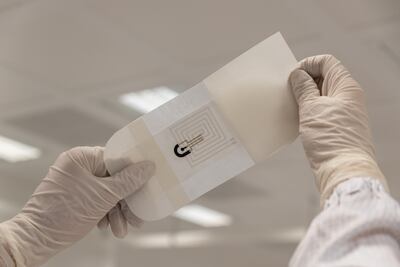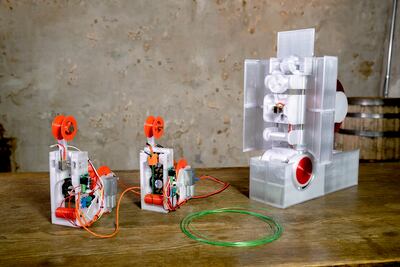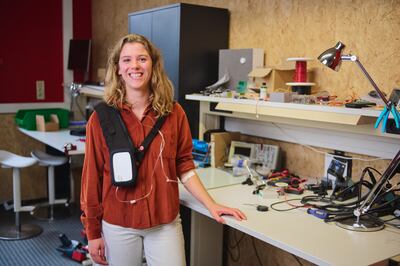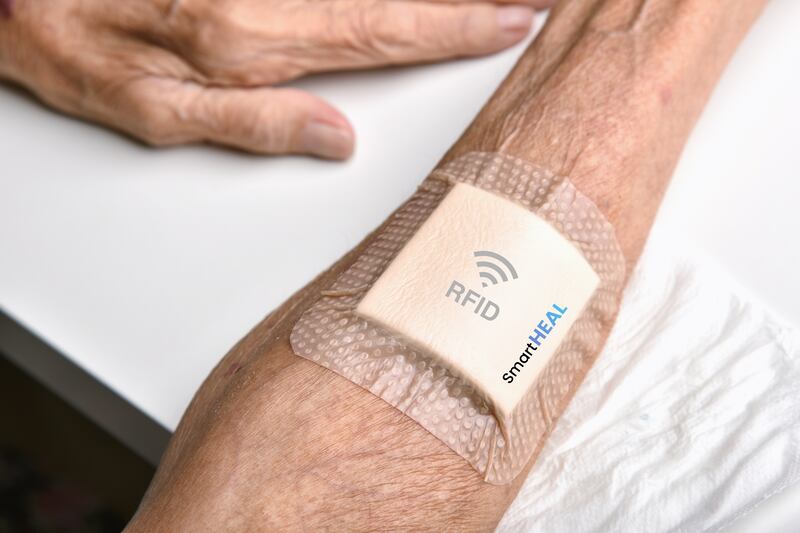A smart sensor for dressings that indicates how well a wound is healing by measuring its pH level has been chosen as a winner of the 2022 James Dyson Award.
The James Dyson Award has given more than £1 million ($1.2m) in prize money to more than 300 inventions from young engineers and scientists around the world.
This year, Sir James Dyson, who is founder and chief engineer at Dyson, selected two global winners, each receiving £30,000, and one runner-up, receiving £5,000, to support the next stages of their inventions.
The awards focus on designs that solve a problem. This problem may be a frustration that everyone faces in daily life, or a global issue.
The important thing is that the solution is effective and demonstrates considered design thinking.
Invented by students from Warsaw University of Technology in Poland, SmartHeal is a precise, affordable and scalable smart sensor for dressings.
When covered by a bandage, it is very hard to know how well a wound is healing.
The most common mistake in wound healing is changing the dressing too often, which can lead to infections and disruption to the tissue.
By using Radio-Frequency Identification (RFID) communication systems and monitoring the pH of a wound, SmartHeal can assess the wound’s condition and detect infection without removing the dressing.
Medical professionals can analyse the data and prescribe the appropriate treatment for the wound. Smart bandages create and preserve a balanced wound environment.

“We’ve all nervously peeled back a dressing or plaster to see what is happening underneath," Sir James said.
"SmartHeal, a smart dressing, has won the International James Dyson Award because it provides doctors and patients with a key piece of data — the pH level — that can tell them how a wound is healing.
"This can improve treatment and prevent infection, saving lives. I hope the award will give the team impetus to proceed down the tricky path towards commercialisation.”
The inventors will finish testing and then start clinical trials. Their aim is to finish the certification process in three years so they can start to distribute and sell SmartHeal dressings in 2025.
Another winner of an award is the polyformer, a machine that recycles plastic bottles into affordable 3D-printer filament for developing nations.
Invented by students from McMaster University in Canada, polyformer is a low-cost machine that cuts plastic bottles into long strips that are fed into an extruder. The strip is then thermoformed into 1.75mm filament, as it goes through a nozzle.
The filament is passed through vents to cool the plastic before it is wrapped around a spool, ready to be inserted into a 3D printer.
The invention is aimed at developing nations because of the high price of importing 3D-printer filament.
With polyformer, makers have easier access to cheap, high-quality filament.
This encourages use of design and career consideration in developing nations, while empowering makers to recycle their own waste and use it productively.

“By turning used plastic bottles into 3D-printer filament, polyformer helps reduce the amount of waste going to landfill and provides a cheap and plentiful material for engineers and designers, especially in developing countries," Sir James said.
"Their idea will provide new opportunities for other inventors to prototype their ideas using 3D printing.”
The inventors are building new polyformers to send to their partners in Rwanda and designing new inventions within the project.
The runner-up for the international award is Ivvy, a wearable replacement for the existing intravenous drip pole apparatus.
Invented by Charlotte Blancke from the University of Antwerp in Belgium, Ivvy improves comfort and mobility for patients.
Research by Ms Blancke found medical treatment at home is increasing, but the equipment used for intravenous therapies is the same as that in hospitals, despite a home setting being different.
As more patients move to home healthcare services for recuperation or long-term care, complex medical devices are now used more frequently in the home, often under unsuitable conditions.
Infusion therapy is when fluids or medication are administered through a cannula or needle at a controlled pace.
Ivvy replaces the intravenous drip pole with a wearable device that provides patients with optimal mobility, an easy-to-use infusion pump, and software that enables nurses to monitor their patients remotely.
Nurses can easily set up the treatment in homes and patients can follow their therapy through a LED strip, display and sound notifications.

“Being treated with an old-fashioned IV drip on a tall stand can make home seem like a hospital," Sir James said.
"Ivvy is a simple concept that could improve people’s treatment and enhance their quality of life.
"It shows the brilliance of simple design and I wish Charlotte every success in developing her idea towards commercialisation.”
Ms Blacke is working with professionals in the industry to support her in further developing Ivvy.






